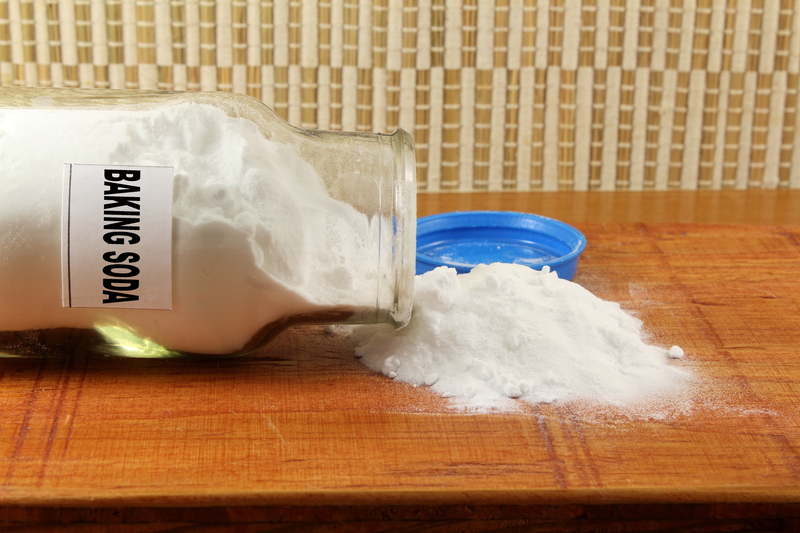Say Goodbye to Mould on Your Window Sills
Posted on 13/09/2025
Say Goodbye to Mould on Your Window Sills
Mould on window sills is a pervasive and unwelcome problem in many homes, particularly in areas with high humidity and poor ventilation. Not only is it an unsightly issue, but mould can also pose serious health risks to you and your family. If you've spotted dark spots creeping across your window ledges, or if you've noticed a musty odour lingering around your windows, it's time to take action. This comprehensive guide will help you learn why mould develops on windows, how you can safely remove it, and the best ways to prevent its return for good.
Understanding Window Sill Mould: What Causes It?
Before you can eliminate mould from your window sills, it's important to know why it's growing there in the first place. Mould is a type of fungus that thrives in moist, warm, and dark environments. Window sills, especially those made of wood or porous materials, are particularly susceptible because:
- Condensation: When warm, moist air comes into contact with cooler glass, condensation forms on the windows and nearby sills, providing a damp environment ideal for mould.
- Poor ventilation: Inadequate airflow in a room (especially bathrooms or kitchens) can trap moisture around windows, promoting fungal growth.
- Leaky windows or window frames: Water seeping in from rain or snow can dampen areas around the window sill, creating the perfect habitat for mould spores.
- Dust and organic debris: Dust, dirt, and organic matter like wood fibres accumulate on sills, offering food for mould to flourish.

Why You Should Never Ignore Mould on Window Sills
While it may seem like a minor aesthetic issue at first, mould growth on window sills can lead to bigger problems:
- Health issues: Mould releases spores into the air which can trigger allergies, worsen asthma, and cause respiratory illnesses, particularly in children, the elderly, and those with weakened immune systems.
- Structural damage: Over time, persistent mould can eat away at wooden window sills, weaken paint, and damage the surrounding structure.
- Decreased property value: Visible mould makes your home less appealing to buyers and can diminish property value.
- Unpleasant odours: Mould often produces a musty smell that can linger even after cleaning, reducing your home's comfort.
Taking steps to tackle mould immediately protects both your property and your health.
How to Remove Mould from Window Sills: Step-by-Step Guide
Ready to say goodbye to mould on your window sills? Follow these proven steps to eliminate it safely and effectively.
1. Gather Your Supplies
- Protective gloves
- Face mask (to avoid inhaling spores)
- Safety goggles
- Old towels or sheets (to shield surrounding surfaces)
- Spray bottle
- Non-abrasive sponge or soft brush
- Bucket of warm water
- White vinegar or baking soda (natural cleaners)
- Household bleach (for stubborn spots, use with caution)
- Microfiber cloths
2. Prepare the Area
- Open the window for ventilation before starting.
- Lay down towels or old sheets under the work area to protect floors and other surfaces.
- Remove curtains, blinds, or plants from the sill.
3. Clean Off Dust and Debris
- Use a dry microfiber cloth to wipe away dust and loose debris from the window sill.
- A vacuum with a hose attachment can also be helpful for tight corners.
4. Apply a Cleaning Solution
- For mild mould: Mix equal parts white vinegar and water in a spray bottle. Generously spritz the affected area and let it sit for 30-60 minutes.
- For stubborn mould: You can use a solution of 1 cup of bleach in 1 gallon of water (never mix with vinegar or other cleaners!). Spray or dab on the mouldy parts and let it sit for 10-15 minutes.
- Alternatively, sprinkle baking soda directly onto damp areas and gently scrub with a sponge.
5. Scrub and Remove the Mould
- Use a soft brush or sponge to gently scrub the window sill.
- Be thorough but avoid damaging paint or wood. Wipe away residue with a clean, damp cloth.
- Repeat as needed until all visible mould is gone.
6. Dry the Area Thoroughly
- Use a clean, dry cloth to wipe down the entire window sill.
- Keep the window open or use a fan to ensure the area is completely dry, as any lingering moisture can cause mould to reappear.
7. Dispose of Contaminated Materials
- Launder all towels and cleaning cloths immediately in hot water, or dispose of them.
- Dispose of any used sponges or disposable gloves safely.
Preventing the Return of Mould on Your Window Sills
Now that you've learnt how to remove mould, the next step is to stop it from coming back. Implement these expert tips to keep your window sills mould-free for good:
1. Control Indoor Humidity
- Keep humidity levels below 60% (ideally 30-50%).
- Use a dehumidifier in particularly damp rooms.
- Open windows regularly to allow moisture to escape.
2. Increase Ventilation
- Install extractor fans in bathrooms, kitchens, and laundry rooms.
- Leave internal doors ajar to encourage airflow throughout the house.
- Use ceiling fans where possible to circulate air.
3. Reduce Condensation on Windows
- Wipe condensation from windows and sills each morning with a dry cloth.
- Use window insulation film during colder months to reduce thermal transfer.
- Consider installing double-glazing or storm windows to improve insulation.
4. Repair Leaks Promptly
- Regularly inspect windows for damaged seals, cracked caulking, or gaps around frames.
- Repair leaks immediately to prevent outside water from infiltrating the sill.
5. Keep Window Sills Clean
- Dust and clean window sills weekly to remove organic matter and dust that can feed mould.
- Use an anti-mould spray or natural solutions (like vinegar) monthly as a preventative measure.
Natural Versus Chemical Cleaners: Which Should You Choose?
When choosing how to tackle mould on your window sills, you may wonder whether to use harsh chemicals or natural alternatives.
- Natural Solutions: White vinegar, baking soda, and hydrogen peroxide are effective at killing many household moulds without toxic fumes. They're eco-friendly and safe for homes with children and pets.
- Chemical Cleaners: Commercial mould removers and bleach-based cleaners kill mould more quickly and may be necessary for extensive infestations. However, they should be used with caution, good ventilation, and protective gear due to their potential to irritate skin, eyes, and lungs.
For light to moderate mould, natural cleaners are often sufficient. Reserve bleach and stronger chemicals for persistent or severe cases.
When to Call a Professional for Window Sill Mould
Sometimes it's wise to seek professional help with stubborn window mould, especially if:
- The mould covers an area larger than one square metre.
- You notice mould spreading inside walls, between panes, or to other rooms.
- There are strong odours, persistent moisture, or signs of wood rot.
- Household members have ongoing health issues related to indoor air quality.
Mould remediation specialists have the expertise, equipment, and products to tackle large or dangerous mould problems safely and effectively.

Frequently Asked Questions about Mouldy Window Sills
Can window sill mould affect my health?
Yes. Even limited patches of window mould can release spores that cause allergies, respiratory irritation, and worsen asthma symptoms, particularly in sensitive individuals. Persistent exposure can also lead to other health complaints.
Is it safe to clean window mould myself?
Most small patches of window sill mould can be safely removed with household products and personal protective equipment. Wear gloves, a mask, and ensure good ventilation. For larger infestations or visible structural damage, professional remediation is advised.
How do I stop condensation from forming on my windows?
Increase ventilation, use dehumidifiers, keep windows slightly open when safe, and insulate windows where possible. Wipe down condensation promptly to prevent dampness on window sills.
How often should I check for mould on sills?
Inspect your window sills weekly in high-risk areas like bathrooms and kitchens. Look for any dampness, staining, or musty smells as early warning signs.
Are wooden window sills more prone to mould?
Yes. Wood is porous and absorbs moisture readily, making it a perfect environment for mould growth. Painted or treated sills are less vulnerable but should still be checked regularly.
Final Thoughts: Say Goodbye to Mould on Your Window Sills for Good!
Taking a proactive approach to mould on your window sills protects your home's appearance, structural integrity, and your family's well-being. By understanding the causes, using safe and effective cleaning techniques, and making simple changes to your home environment, you can keep your window sills clean, fresh, and mould-free long-term.
Looking for more home care tips? Bookmark this page and share with friends who want to enjoy healthier, cleaner living spaces!
- Act fast when you see the first signs of mould
- Keep your sills dry and ventilated
- Clean regularly to prevent future outbreaks
- Don't hesitate to call professionals if mould gets out of hand
Say goodbye to mould on your window sills--once and for all!




